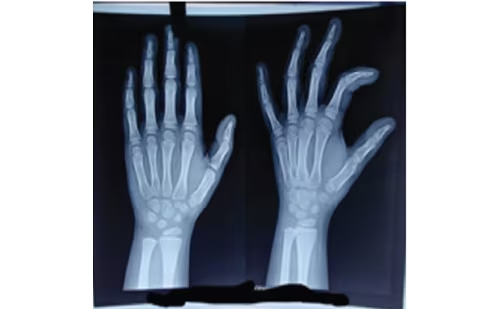The PROS study led to pediatric endocrinologists, i.e. Lawson Wilkins Pediatric Endocrine Society, proposing new definitions of precocious puberty, viz precocious onset (of puberty) occurs when it is noted at less than six years of age in African-American females and less than seven years in white American otherwise healthy girls.
Initiation of Puberty and Pubertal Milestones
The PROS study led to pediatric endocrinologists, i.e. Lawson Wilkins Pediatric Endocrine Society, proposing new definitions of precocious puberty, viz precocious onset (of puberty) occurs when it is noted at less than six years of age in African-American females and less than seven years in white American otherwise healthy girls.
Initiation of Puberty and Pubertal Milestones
The exact stimulus that initiates pubertal development remains a point of conjecture. It is known that girls during childhood, i.e. prepuberty, have a low circulating level of leutinizing hormone (LH) to follicle stimulating hormone (FSH) ratio. The suppression of these gonadotropins is a reflection of the predominance of negative feedback between circulating estrogens, which are in low levels, and the intrinsic central inhibition at the hypothalamic level.This suppression is due to low levels of the gonadotropin-releasing hormone (GnRH) within the HPO axis. With onset of puberty there is an increase in GnRH,LH and FSH secretion in a characteristic pattern which in general begins two years before onset of clinical signs of puberty.Thus, overall, the very first evidence for onset of puberty is the nocturnal rise in LH. A decrease in sensitivity to negative feedback occurs at the hypothalamic- pituitary level with resultant increase in pulsatile release of GnRH, and the characteristic nocturnal (sleeprelated) increase primarily in LH. As puberty progresses, ultimately there is an increase in pulsatile FSH and LH during daytime hours, reflective of an adult pattern of gonadotropin secretion. A rise in FSH precedes the LH surge noted midcyle immediately preceding ovulation. Simultaneously there is an ovarian response with FSH stimulating follicular growth in the ovary and aromatase activity converting androgens to estrogens. Within the ovary, the resultant increase, especially of the more potent estrogen, estadiol (E2) effects a change in sensitivity of the hypothalamic and pituitary axis midcycle to a positive feedback, resulting in a marked release primarily of LH but also a smaller surge of FSH. It is believed that this gonadotropin (FSH and LH) surge is responsible for ovulation. A number of other hormones, including inhibin B, released from granulosa cells in the ovary, result in overall decrease in FSH level. Inhibin remains in a finetuned balance with other polypeptides including actvin which stimulates FSH release.
At the adrenal level, during puberty, there appears to be an independent process occurring which reflects the adrenal undergoing a host of endocrinologic changes, also beginning on average two years before overt signs of puberty, this increase in androgens results in pubic and axillary hair development, i.e. pubarche. The circulating levels of dehydroepiandrosterone and its sulfate (DHEAS) are increased as well as the androgen androstenedione.
Peak growth velocity in general occurs as an early sign of onset of puberty and is usually followed by thelarche but either may be a cardinal sign of onset of the physiological process. Table 2 details the sequence of events.
Clinicians assess pubertal development in part by using the Tanner classification of breast and pubic hair development as noted in Figure 1.3 Simultaneously, changes are occurring in the vagina and uterus which is a reflection of the increased circulating estrogen levels. The vaginal contour, color of the mucosa and a fall in pH all occur. Leukorrhea is a normal phenomenon and indicative of desquamated epithelial cells and mucous from the estrogenized vaginal mucosa. Thickening of the labia majora and labia minora occurs. The vagina grows in length and the ovaries increase in volume in addition to exhibiting evidence of follicular growth. The uterus increases in size with the primary growth being in the main body or fundus. Precocious Puberty
Precocious puberty, which is general, is consistent with onset of segments or all of the above mentioned pubertal milestones beginning at six years of age. Precocity is divided into GnRH-dependent and GnRHindependent classes.With the exception of premature thelarche which is addressed below it is associated with advanced bone age that if untreated results in short stature. Table 3 provides details of the classification.
The most common form of precocious puberty is idiopathic in which central, i.e. gonadotropindependent, premature maturation of the hypothalamicpituitary- ovarian axis occurs. A less common etiology is that of central nervous system (CNS) neoplasms; hypothalamic hamartomas which are benign tumors that release GnRH and thus stimulate ovarian function.The problem is more common in males than in females and can be detected via magnetic resonance imaging (MRI).
Gonadotropin-independent precocious puberty is often manifest as McCune Albright Syndrome. There is a triad of cutaneous hyperpigmentation (café au lait spots), polyostotic fibrous dysplasia and isosexual precocity.4 Isolated premature thelarche may occur and when present usually occurs at two to three years of age. Bone age remains normal and the problem is selflimited. The incidence of isolated precocious thelarche is 21:100,000 person/year.5
Management depends on the underlying cause of the precocity. In general a key principle in management of precocious puberty is to delay premature closure of the epiphyseal plates and thus overall short stature. Currently, goandotropin-releasing hormone agonists (GnRHag) are the primary mode of treatment to suppress the HPO axis and prevent epiphyseal closure. Isolated segments of precocious puberty may occur such as precocious thelarche which is often a reflection of increased ovarian hormone production. Suppression of such hormone output frequently results in regression of breast development. Similarly precocious pubarche can occur and requires assessment for the underlying etiology and appropriate treatment. Premature adrenarche is associated with pubic, axillary hair or both before eight years of age. The etiology remains an area of debate but is thought to be associated with increased androgens from the adrenal gland zona reticularis.6 It is more common in girls that are Asian or African-American individuals.7 Long-term sequelae include progression to full blown precocity.
Delayed Puberty
Delayed puberty is equated with lack of breast development by chronologic age 13 or primary amenorrhea with the presence of secondary sex characteristics by 15 years of age.A more common form of delayed puberty is that of idiopathic hypogonadotropic hypogonadism (IHH). This is characterized by relatively low levels of circulating estrogens and gonadotropins. The etiology of IHH has been ascribed to mutations in the KAL gene (X-linked Kallmann syndrome) and in DAX1 (X-linked adrenal hypoplasia congenital), located in the GnRH receptor area.8 In addition defects in the related G protein-coupled receptor, GPR54 have been reported.9 This results in decreased GnRH release and thus these patients can be treated with GnRH administration.
Kallmann Syndrome is hypogonadotrropic hypogonadism with associated anosmia. The presumed etiology is that during intra-uterine development, the GnRH-releasing neurons and olfactory neurons originate in the olfactory placode and migrate to the hypothalamus and olfactory bulb respectively. Mutation in the KAL gene is related to this disorder.10
Prader-Willi Syndrome is an autosomal dominant problem which reflects a defect on chromosome 15. It is characterized by decreased fetal activity, obesity,muscular hypotonia, mental retardation, short stature, small hands and feet, and in the male micropenis and cryptorchism to accompany the hypogonadotropic hypogonadal state.6 Androgen insensitivity syndrome is characterized by the presence of breast development, scarce pubic hair and circulating testosterone levels in the male range. Amenorrhea is associated with absence of mullerian structures and a blind vaginal pouch is noted.The problem requires differentiation from mullerian anomalies with absence of the uterus and a blind vaginal pouch.With the latter the total testosterone levels are in the female range.
Perhaps the more common presentation of delayed puberty, gonadal dysgenesis, is that of Turner syndrome. It is characterized by 45XO karyotype, although there are mosaic variations. These patients require evaluation for cardiovascular (CVS) and renal anomalies as the incidence is significantly increased compared to the general population. Today, individuals with Turner Syndrome and other forms of gonadal dysgenesis in which there is a uterus in situ, can carry a pregnancy with use of donor oocytes in association with assisted reproductive technology (ART). CVS assessment should precede ART.
Hypo- and hypergonadotropic hypogonadism can be due to chemotherapy or radiation therapy.
The basic tenets of evaluation include a detailed history and physical examination, assessment of thyroid function, cortisol secretion, skeletal survey and as indicated neuroradiologic evaluation of the central nervous system. Karyotyping is appropriate depending on the clinical circumstance. Serum gonadotropins and androgens are useful in the overall assessment. Treatment of pubertal abnormalities must be designed to address the underlying cause of the delay.







